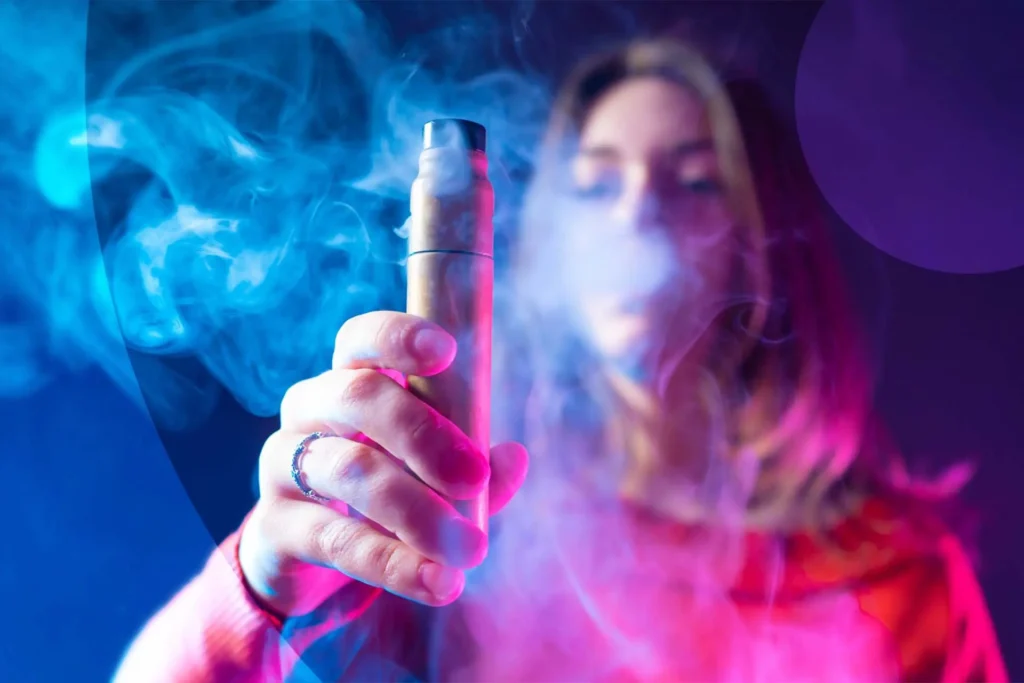Vaping has emerged as a significant cultural and health phenomenon over the past decade. Originally marketed as a safer alternative to smoking, vaping quickly gained popularity, particularly among younger demographics. However, as its use has expanded, so too has the controversy surrounding it. This article explores the rise of vaping, its health impacts, the societal implications, and the ongoing debates about its regulation.
The Growth of the Vaping Industry

The vaping industry has grown exponentially since its inception in the early 2000s. With the introduction of sleek, user-friendly devices and a wide variety of flavored e-liquids, vaping quickly became an attractive alternative to traditional cigarettes. By 2023, the global vaping market was valued at over $20 billion, with millions of users worldwide.
Vaping’s appeal lies in its perceived safety compared to smoking, the variety of flavors available, and the social aspect it offers. However, this rapid growth has not been without its challenges, as regulatory bodies struggle to keep pace with the evolving industry.
Health Impacts: What We Know and What We Don’t
One of the most significant debates surrounding vaping concerns its health impacts. While it is generally accepted that vaping is less harmful than smoking traditional cigarettes, it is not without risks.
Nicotine Addiction:

Many vaping products contain nicotine, which is highly addictive. For young users, vaping can lead to a lifelong addiction and potentially serve as a gateway to traditional smoking.
Lung Health:

There have been reports of severe lung injuries associated with vaping, often linked to the use of black-market THC products. The long-term effects of inhaling vaporized substances are still not fully understood, raising concerns about potential respiratory issues.
What Chemicals Are In Vapes?

Propylene Glycol (PG) and Vegetable Glycerin (VG) – like nicotine, PG and VG are also common ingredients in e-cigarettes and vaping devices. It’s considered safe to ingest, however, inhalation of high levels of PG, especially over an extended period of time, may cause respiratory irritation.
Flavoring Chemicals – vapes now come in a wide range of flavors and to achieve these mixtures, manufacturers use a range of chemicals. Whether these chemicals are safe is an area of ongoing research, especially when they’re heated and inhaled.
Volatile Organic Compounds (VOCs) – these compounds are also found in cigarette smoke, but with vapes they’re generally at a lower level. However, they do still pose adverse health effects.
Metals – some studies into vapes have found trace amounts of metals like lead. These compounds aren’t used directly in the vape liquid but rather are part of the device itself, often in the heating coils. Cheaper and poorer-quality vape devices are more likely to see these issues.
Acrolein and Formaldehyde – these compounds are also found in tobacco cigarette smoke and again, like VOCs, are also present in vapes, just at a much lower level. Ingesting them is still known to cause harm.
While this list isn’t exhaustive it covers the significant majority of chemicals found in vapes, as well as tobacco smoke. All of them pose a health hazard and risk of lung disease, especially when consumed in high quantities.
Key Takeaways On Chemicals And Vapes
- A range of chemicals are used in e-cigarettes and vapes, sometimes as many as 60 or 70
- The most common chemical is nicotine. Some studies have found that nicotine can impact developing brains.
- Other chemicals found in vapes can cause respiratory irritation. In rare cases, metal compounds like lead can form part of the vapor produced by devices.
- Brands like Hyde Vapes and Breeze use synthetic nicotine to bypass tighter regulations. Some products are not evaluated by the FDA.
Are There Other Toxic Chemicals In Vapes And E-Cigarettes?
Though we’ve covered a lot of different chemicals so far, studies, such as that conducted by Herrington and Myers in 2015 have found around 60 to 70 different compounds in vape liquid.

Other studies have found a massive 113 different chemicals in 50 brands of vapes. What scientists have found is that the vaporization process can create aerosols and therefore additional compounds. In fact, Herrington and Myers found 18 additional compounds produced by the heating process.
A number of these chemical compounds are described as ultrafine particles which have known carcinogenic properties.
Some of these aerosol compounds include carbonyl, tobacco-specific nitrosamines (TSNAs) and silicates.
Further research also needs to be conducted into the unique flavors on offer. According to one study in 2014 by Zhu et al, there are more than 7,000 flavors to choose from. One of the issues, however, is that flavoring substances are often not included in lists of ingredients. The concern is that these chemicals used could have toxic effects when heated.
For example, one common chemical used to make sweet vape liquids is saccharides. Some studies have found that this can degrade when heated, producing a compound called aldehydes which can cause irritation to the throat.
Conclusion
Vaping represents a complex and evolving issue at the intersection of public health, industry innovation, and societal trends. While it offers a less harmful alternative to traditional smoking for some, it also poses significant risks, particularly for young people. As the vaping industry continues to grow, it will be crucial for regulators, health professionals, and society at large to navigate the challenges and opportunities it presents.

Share via:



